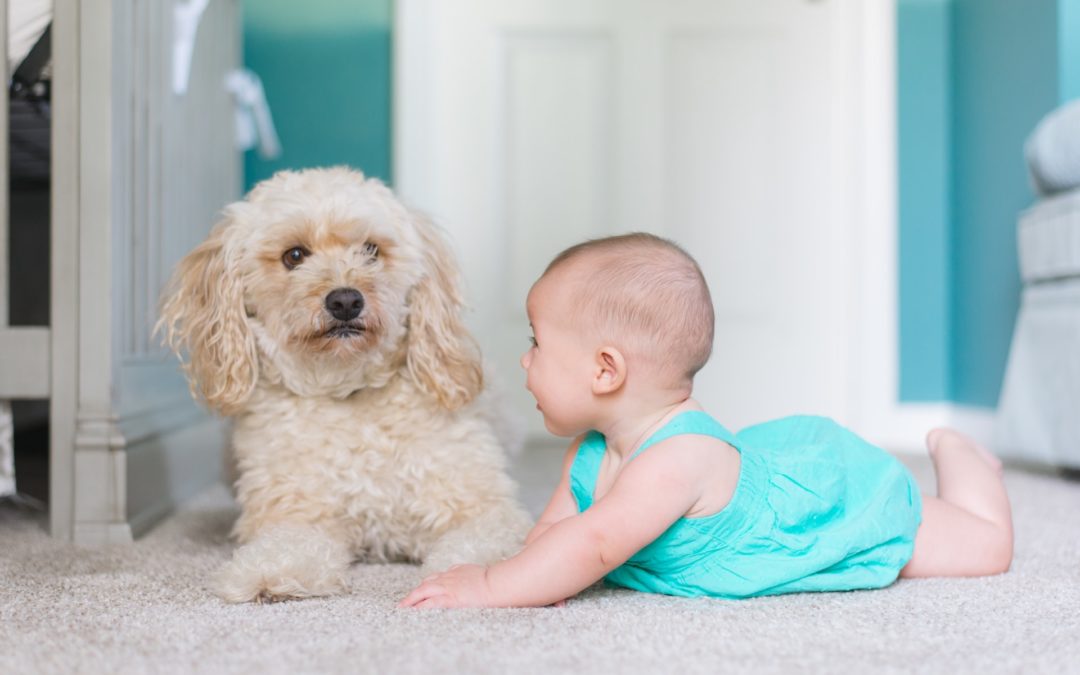Whether you’re expecting a baby, getting your kids their first pet, or have children visiting, keeping everyone safe is probably your first concern. Although it’s sweet when they play together, both kids and pets can get hurt if they are not supervised.
Older pets might be stressed out or frightened by young children, and kids can get frightened just as easily if a pet hisses growls, or nips at them. Here’s how to keep interactions between pets and children safe and fun for everyone.
Three Tips for Keeping Pets Safe Around Kids
1: Pick Up Small Toys
Wherever there are children present, there will also be toys. Small toys are especially dangerous to pets. If swallowed, they can get stuck in the intestines, and your pet might need an emergency surgery to have it removed.
2: Know When Your Pet Has Had Enough
Understanding your pet’s body language is very important when they’re around kids. Knowing when they’ve had enough and separating them from the kids help you prevent accidents and injuries. Remember that aging cats and dogs may have lower tolerance levels, especially around unpredictable youngsters.
3: Offer Safe Spaces for Pets
At some point, even the friendliest pets might need a break from the chaos of a toddler, the noise of a newborn, or the unrelenting affection of older children. Giving your pets a spot where they can hide without the fear of being bothered can help reduce their stress levels.
For dogs this can look like an open crate in a room where you can shut the door. If they go inside the crate, make sure that the children stay away. Cats often feel safe in high spots, so a cat tree or perch that children cannot reach could be a safe place. They also like dark, enclosed spaces like closets.
Three Tips for Keeping Children Safe
1: Teach Kids How to Approach Pets Calmly
Sometimes the excitement of a dog or cat can be too much for some children and they might squeal, run, or jump toward a pet. A surprised pet could lash out, especially if woken from sleep.
While some dogs are just as happy to see kids as kids are to see them, others might not be. The same goes for cats—most are shy at first, and many cats do not take kindly to being picked up. Teach your children to always approach pets with a quiet voice and calm body.
2: Teach Children How to Give Gentle Touches
Children don’t often know their own strength, or understand the body language of animals. The combination of these two things is what leads to problems in interactions between children and pets. Teaching children to only use gentle touches when interacting with pets will keep both of them safe.
Teaching kids about how dogs and cats act when they get upset is also extremely important. Cats might hiss or pin their ears back, while dogs might growl, or lift their lip to show their teeth. By pointing these behaviors out to your child when they happen and letting them know it means “stay away” you are helping to protect them.
3: Never Leave Pets Alone with Children
Even though they might be the best of friends, supervising interactions between kids and pets is a must. No one wants to imagine it, but unsupervised interactions can lead to injuries and even death.
Anything can happen when you leave kids and pets alone together—you could come back to the chaos of a spilled trash can or accidental bites due to a hand in the food dish. Pets and kids always need a babysitter when they play together.
Veterinary Care in Gilbert, Arizona
Keeping your pet safe around kids goes along with keeping them healthy. Animals who feel sick or in pain might act differently or lash out. But since pets usually hide their pain, regular veterinary checkups are the best way to ensure that they’re in good physical health. And since some diseases can be transferred from pets to kids, checkups are also a good time to make sure your pet is up-to-date on their vaccinations. If your pet is due for their yearly exam, contact us today to make an appointment.
Images used under creative commons license – commercial use (3/19/23).Photo by Picsea on Unsplash.

